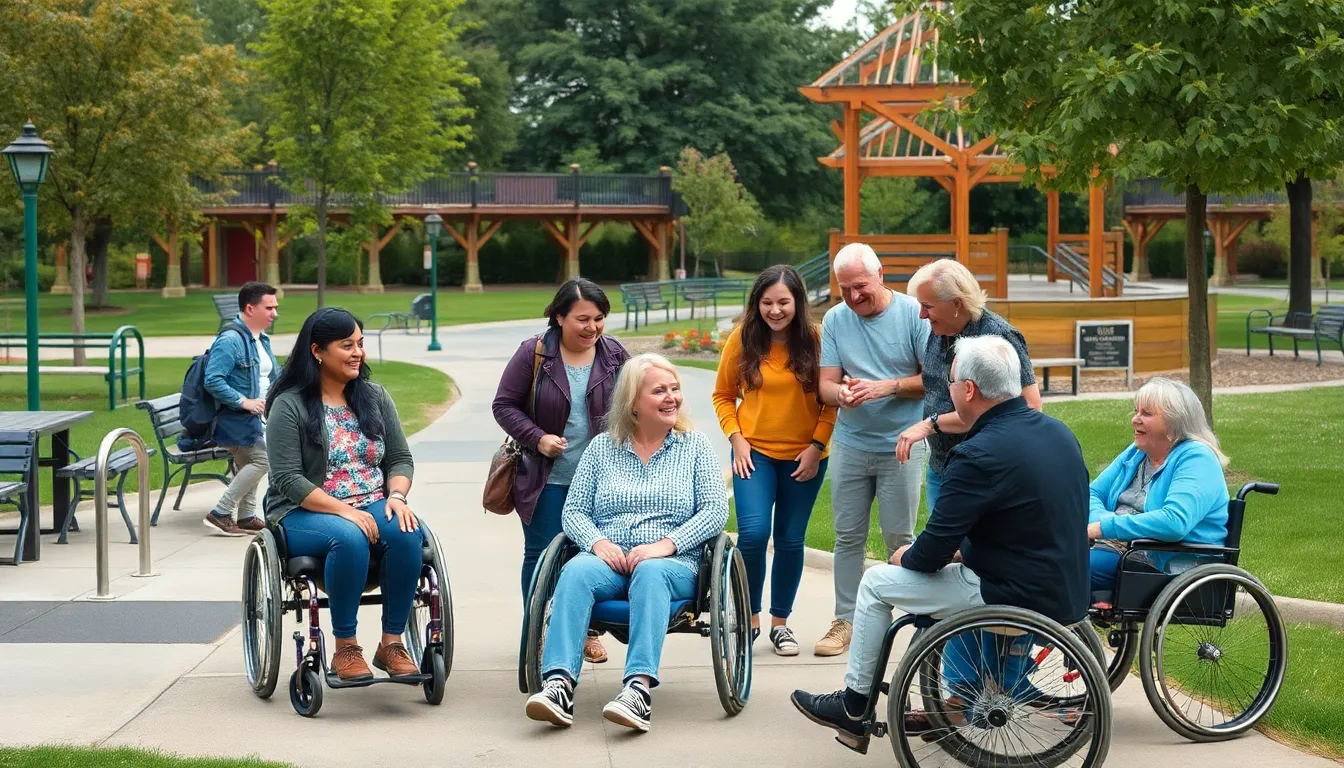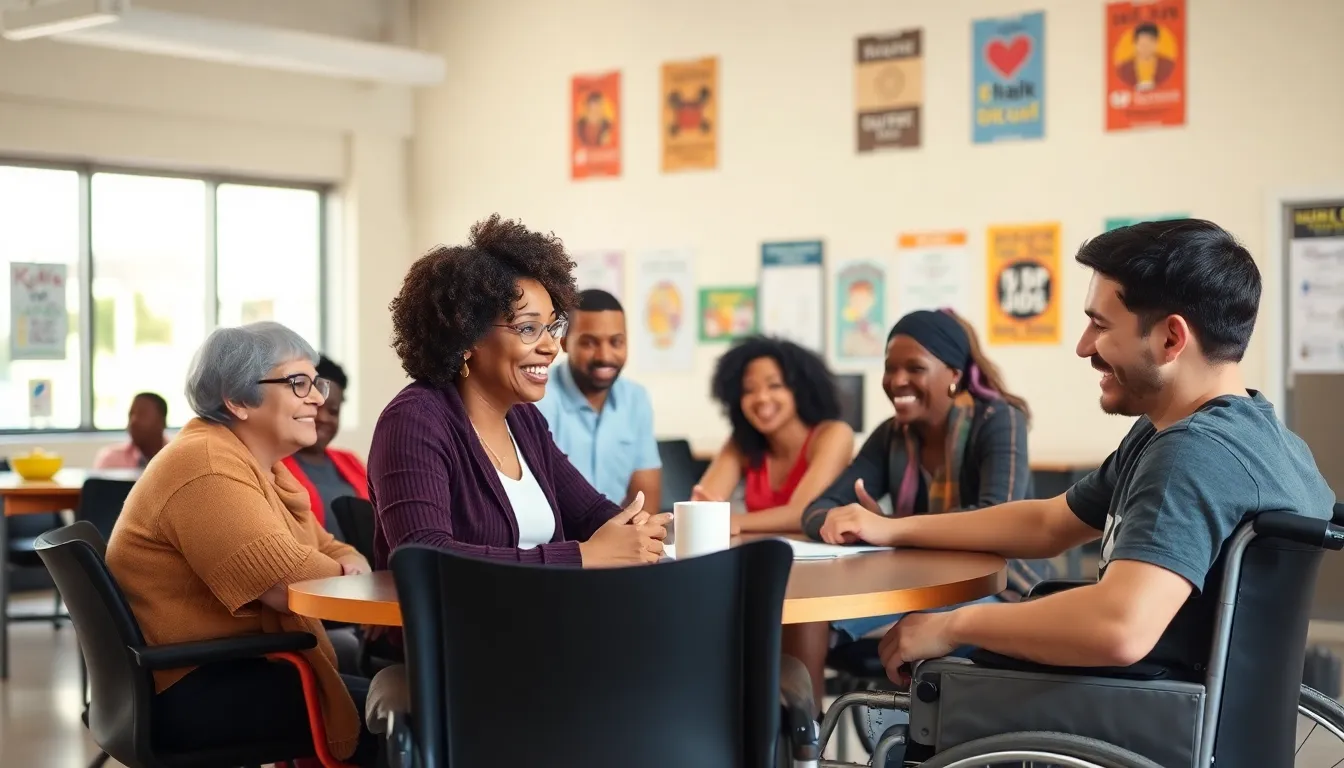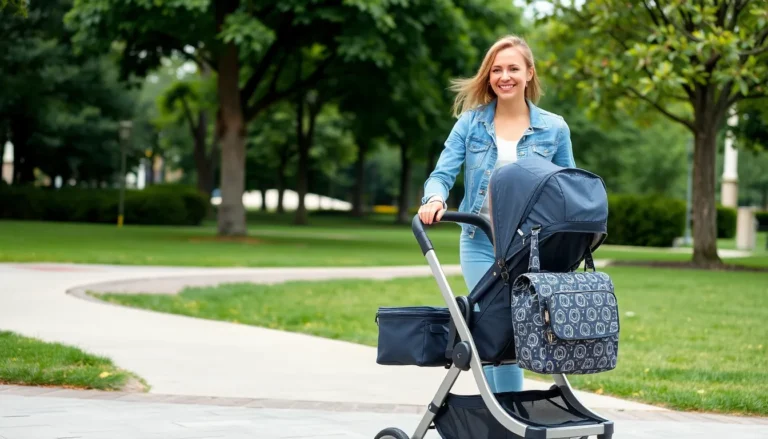Table of Contents
ToggleBuilding inclusive communities requires collaboration and understanding, especially when addressing the needs of individuals with disabilities. Community partnerships play a vital role in creating environments where everyone can thrive. By bringing together local organizations, businesses, and advocates, these partnerships foster support systems that empower individuals with disabilities and promote accessibility.
These alliances not only enhance resources and opportunities but also raise awareness about the unique challenges faced by people with disabilities. Through shared goals and collective action, communities can break down barriers and create lasting change. Embracing the strengths of diverse partnerships paves the way for a more equitable society where everyone has the chance to participate fully.
Understanding Community Partnerships for Disabilities
Community partnerships for disabilities focus on collaborative efforts to create inclusive environments that support individuals with disabilities. These alliances are essential for fostering accessibility and empowerment within the community.
Definition and Importance
Community partnerships for disabilities encompass collaborations between local organizations, businesses, and advocates aimed at addressing the needs of individuals with disabilities. These partnerships are vital for raising awareness about accessibility issues, promoting resources, and enhancing opportunities. By uniting various stakeholders, communities can effectively break down barriers and foster an equitable environment where all members can thrive.
Types of Community Partnerships
- Nonprofit Organizations: Nonprofit entities provide essential support services and advocate for the rights of individuals with disabilities. They often collaborate with other groups to maximize resources and outreach.
- Local Businesses: Local businesses play a critical role by offering job opportunities, internships, and training programs to individuals with disabilities. Their involvement promotes inclusivity in the workforce and showcases community commitment.
- Educational Institutions: Schools and universities can partner with organizations to create programs that support individuals with disabilities. These partnerships foster educational accessibility and skill development.
- Government Agencies: Government entities collaborate with community organizations to develop policies and programs that improve accessibility and support for individuals with disabilities.
- Advocacy Groups: Advocacy groups work towards policy changes and public awareness campaigns to promote the rights and needs of individuals with disabilities. Their partnerships enhance community engagement and support.
- Healthcare Providers: Healthcare professionals and organizations work with community partners to ensure individuals with disabilities receive appropriate medical care and resources. This collaboration improves health outcomes and overall quality of life.
Benefits of Community Partnerships

Community partnerships significantly enhance the quality of life for individuals with disabilities by providing critical resources and support networks. These collaborations lead to improved accessibility and strengthen community ties, ensuring that everyone benefits.
Enhanced Resource Accessibility
Enhanced resource accessibility occurs through partnerships that pool resources for individuals with disabilities. Nonprofit organizations often supply essential services, including legal advocacy, counseling, and job placement. Local businesses may also contribute by offering discounted services, providing employment opportunities, and facilitating accessibility upgrades. Educational institutions create inclusive programs that accommodate diverse learning needs, while government agencies develop initiatives aimed at improving transportation and communication accessibility. Together, these partnerships streamline resources, making it simpler for individuals with disabilities to access essential services and opportunities.
Improved Support Networks
Improved support networks arise from the collaborative efforts of community partners working together to create a robust safety net. Advocacy groups raise awareness about disability rights, while healthcare providers offer specialized services tailored to individual needs. These networks ensure timely access to medical care, social services, and community programs. By connecting individuals with disabilities to various support systems, community partnerships foster a sense of belonging and increase overall well-being. Mutual support within the community empowers individuals, helping them navigate challenges and share experiences.
Successful Examples of Community Partnerships
Successful community partnerships for disabilities display the power of collaboration in creating inclusive environments. This section highlights notable case studies that exemplify effective alliances working towards empowerment and accessibility.
Case Study 1: Local Nonprofits
Local nonprofits often lead initiatives that enhance the lives of individuals with disabilities. For example, a nonprofit in a major city partnered with local businesses to develop job training programs tailored to people with disabilities. This partnership created pathways to employment through mentorship and hands-on training. Participants acquired valuable skills, leading to higher employment rates and increased economic independence. Additionally, the nonprofit organized community awareness campaigns that educated local businesses on the advantages of hiring individuals with disabilities. This collaboration not only increased job opportunities but also fostered a more inclusive workplace culture.
Case Study 2: Educational Institutions
Educational institutions play a vital role in community partnerships focused on disability inclusion. A university collaborated with regional nonprofits to create a program that offers accessible learning experiences for students with disabilities. This initiative involved developing curriculums that accommodate diverse learning needs, ensuring access to resources like adaptive technology. Furthermore, the partnership enabled mentorship opportunities for students with disabilities through peer support groups and networking events. As a result, students reported increased confidence and success in their academic pursuits. This demonstrates how collaboration among educational institutions and community organizations can create lasting impacts on individuals with disabilities.
Challenges in Establishing Partnerships
Establishing community partnerships for disabilities presents distinct challenges that can hinder progress. Key obstacles include communication barriers and funding limitations.
Communication Barriers
Communication barriers often create significant hurdles in developing partnerships. Diverse stakeholders, including individuals with disabilities, community organizations, and local businesses, may face challenges in effectively sharing their goals and needs. Language differences, varying levels of understanding about disabilities, and limited availability of interpreters or accessible materials contribute to these obstacles. Miscommunication can lead to misunderstandings, resulting in ineffective collaboration efforts. Ensuring that all parties can engage in open, meaningful dialogue promotes clarity and aligns expectations, thereby strengthening partnerships.
Funding Limitations
Funding limitations pose another critical challenge in establishing community partnerships. Many organizations involved with disabilities operate under tight budgets, restricting their ability to participate in collaborative initiatives. Competition for grants and limited public funding often exacerbates financial constraints. These limitations hinder the development of programs designed to empower individuals with disabilities and restrict the resources available for essential services. Addressing these funding gaps requires advocacy for increased financial support and exploring alternative revenue sources, ensuring that community partnerships can thrive and enhance accessibility.
Community partnerships play a crucial role in creating inclusive environments for individuals with disabilities. By uniting various stakeholders like nonprofits, businesses, and educational institutions, these collaborations enhance accessibility and empower individuals. The benefits extend beyond resources; they foster a sense of belonging and community connection.
While challenges such as communication barriers and funding limitations exist, the potential for positive change is immense. Successful examples demonstrate that when communities come together, they can break down barriers and promote equity. Ultimately, a commitment to collaboration can lead to a society where everyone has the opportunity to thrive, showcasing the power of community partnerships in transforming lives.





